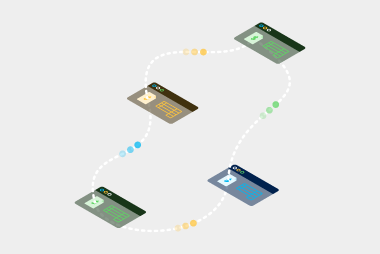EDI is costly
There’s an assumption that EDI is too costly and not worth the investment. This myth is often based on outdated technologies. Technology has advanced ignorantly in the last couple of decades though, and EDI service providers can provide a range of cost-effective options for businesses. For businesses looking to comply with retailer requirements, a good option is to use a simple EDI web portal, where you send and receive EDI messages. This can cost the same as a monthly phone plan and many see EDI as a small price to pay to maintain their retailers’ business. EDI integration can work out to be extremely cost-effective too. EDI integration involves the exchange of business information directly between business software. This method can be more expensive than a web portal, but the benefits can definitely justify the investment. EDI integration automates manual processes and sends documents electronically, which creates significant cost savings. Some sources calculate the cost of processing an order manually to be around $38 compared to just $1.35 using EDI.EDI is complicated to implement
There’s a perception that EDI is complicated to implement, with some believing EDI is difficult to understand and needs expert skills. EDI messages are just another coding language, sometimes even XML or CSV. Once you understand how they’re constructed and what each element means, it’s as easy as pie. There are now even EDI standards, which have simplified this even further. In the end, EDI will make your processes more streamlined and improve your business communications. Plus, if you partner with an experienced EDI provider, they can often hold your hand through the process.EDI creates errors
Some believe EDI can cause bugs and errors. There are a few reasons why this is wrong. These days there are a range of tests and approvals before a company goes live with EDI. For example, here at MessageXchange, we perform testing between you and us, the EDI provider, as well as end-to-end testing with your trading partners. It’s only once these tests are completed and passed that EDI is moved to production.EDI slows down business processes
Many worry that moving to EDI will be disruptive to their businesses. It is believed that EDI interferes with business processes which slows down workflows. Overall, EDI can be quick to implement, depending on your goals and solution. If you stage your EDI implementation correctly, and gear your implementation to achieve your biggest objective first, it’s can really improve speed and productivity. This gives staff more time to work on other tasks. It also reduces the risk of errors and therefore the time needed to correct them. Studies show paper orders can take upwards of 10 days to fulfill, while EDI orders can take less than a day.EDI is used less and less
You might’ve seen comments about EDI’s declining use and its possible replacement by other technology like APIs. APIs are actually used by most current EDI service providers. They shouldn’t be thought of as an opponent to EDI, but as just another connection protocol for EDI, like sFTP or AS2. After all, APIs don’t follow a generic standard, whereas EDI does. That means it’s faster and easier to onboard new trading partners. EDI use is in fact growing around the world. Over 60% of businesses across the United States already use EDI in their daily operations. If you want to learn more about EDI and how it can help your business, request a call back from one of our team.Request a call
Chat with one of our experts
Just fill out your details below and we'll be in touch within one business day.


 It uses a standardised framework, Peppol[vc_column_inner width="1/3" css=".vc_custom_1611113989632{padding-top: 0px !important;padding-right: 20px !important;padding-bottom: 0px !important;padding-left: 15px !important;background-color: #eeeeee !important;}"]Value Added Network (VAN)
It uses a standardised framework, Peppol[vc_column_inner width="1/3" css=".vc_custom_1611113989632{padding-top: 0px !important;padding-right: 20px !important;padding-bottom: 0px !important;padding-left: 15px !important;background-color: #eeeeee !important;}"]Value Added Network (VAN)


